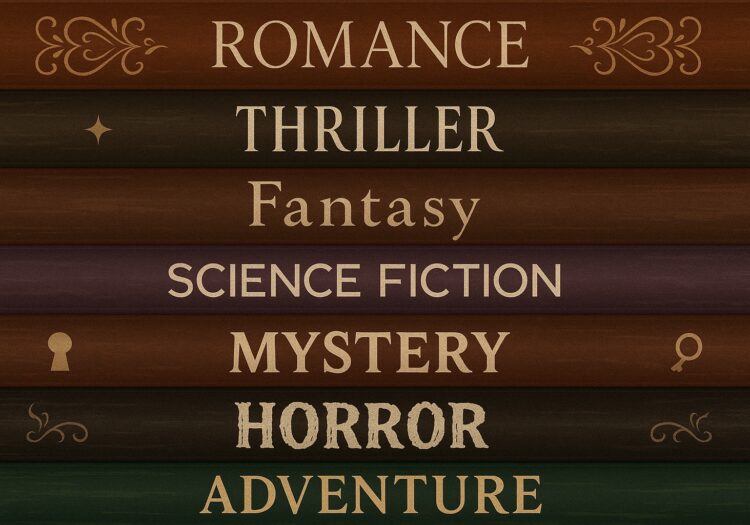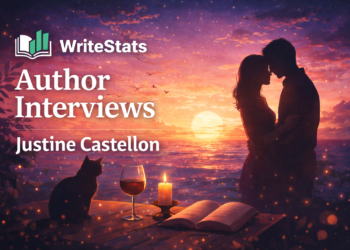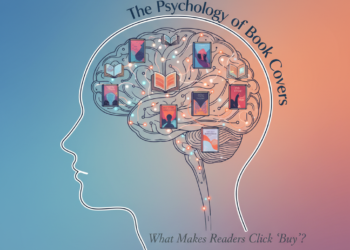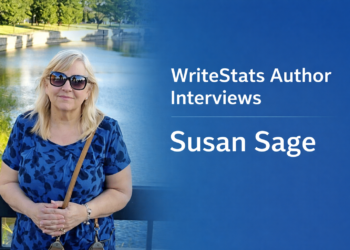Cross-Genre Fiction Trends are reshaping how stories are written, marketed, and enjoyed. Readers today don’t just want one flavor; they crave fresh blends that surprise them while still feeling familiar. If you’ve noticed fantasy mixed with romance, thrillers with sci-fi twists, or even climate fiction paired with mystery, you’re not imagining things; genres are blending more than ever.
For authors, this shift opens both opportunities and challenges. In this guide, we’ll explore what’s trending, what the data shows, and how you can use these insights to make better creative and business decisions.
What Is Cross-Genre Fiction?
Cross-genre fiction blends two or more established genres into one story. Some examples:
- Romantasy: A fantasy world with romance as a driving force.
- Cli-Fi Thrillers: Climate fiction layered with mystery or suspense.
- Historical Speculative: Real-world history mixed with magical realism or alternate timelines.
These hybrids stand out because they combine the best of both worlds: thriller pacing with sci-fi imagination, or romantic intimacy with fantastical settings.
Cross-Genre Fiction Trends: No Signs of Slowing
The trend isn’t fading, it’s accelerating. Each year, new hybrids emerge. A decade ago, “romantasy” wasn’t a household word. Today, it dominates bestseller lists and drives huge gains in fantasy sales. Similarly, climate fiction, once niche, now accounts for 3.5% of all published fiction.
Why? Because readers love novelty. They’re not satisfied with the same tropes recycled endlessly; they want fresh experiences that feel both surprising and emotionally satisfying. And with platforms like BookTok and Goodreads amplifying buzz, unusual combinations can quickly become global sensations.
Understanding Cross-Genre Fiction Trends now positions you to take advantage of emerging opportunities over the next five to ten years.
Why Readers Love Cross-Genre Stories
Cross-genre fiction often creates more engaged communities. Readers who dive into hybrids tend to be curious, vocal, and passionate. They discuss books online, recommend them to friends, and join niche groups dedicated to their favorite blends.
Take romantasy fans: not only are they reading obsessively, but they’re creating fan art, discussion threads, and TikToks that spread word-of-mouth far beyond what traditional marketing could achieve. The complexity and novelty of hybrid stories often spark richer conversations than single-genre works.
If you want readers who actively champion your book, cross-genre storytelling can be a powerful strategy.
Major Cross-Genre Fiction Trends in 2025
1. Romantasy (Fantasy + Romance)
Sales of fantasy and sci-fi rose by 41.3% in the UK from 2023 to 2024, thanks largely to romantasy. These books combine epic world-building with emotional intimacy, making them especially addictive.
If you’re a fantasy writer, consider adding romantic stakes. If you’re a romance author, experiment with fantastical settings.
2. Climate Fiction (Cli-Fi) Hybrids
As we explored in our cli-fi blog, environmental themes are becoming mainstream. What’s new is how cli-fi blends with suspense, romance, and even cozy mystery. Readers don’t just want dystopian doom; they want climate-conscious stories across genres.
Use cli-fi elements to add urgency and depth to your existing genre. For example, a romance set against rising seas, or a mystery where climate change plays into the motive.
3. Thrillers With a Twist
According to our survey, 40% of readers finish thrillers. That’s the highest completion rate across genres. Authors are now merging thriller pacing with sci-fi, horror, or historical fiction, knowing that suspenseful storytelling keeps readers hooked.
Even if you don’t write thrillers, borrow their techniques—short chapters, cliffhangers, rising stakes—to keep your hybrid compelling.
4. Diverse & Grounded Speculative Fiction
Cross-genre is also being used to highlight diverse voices and underrepresented cultures. Think magical realism rooted in African folklore or speculative mysteries set in Asian megacities. These stories appeal to global audiences hungry for new perspectives.
Draw from your own heritage or areas of interest. Blending cultural richness with genre tropes creates unique, standout stories.
5. High-Concept Emotional Hybrids
Publishers increasingly want “big ideas with heart.” A cli-fi mystery about a missing child, or a sci-fi romance about grief and healing, can deliver both marketable hooks and deep emotional payoffs.
When blending genres, don’t lose the emotional thread. Readers may remember the twists, but they cherish the feelings your book gives them.
Publishing Industry Response
The industry has taken note:
- Big publishers are signing more high-concept, emotionally resonant hybrids. Romantasy, cli-fi thrillers, and diverse speculative blends are attracting large advances.
- Smaller presses often lead the way in experimenting with unusual mixes, paving the path for bigger houses to follow.
- Indie authors are thriving in cross-genre niches thanks to flexible marketing on platforms like Amazon, where clever metadata and category selection can reach highly targeted readers.
Publishers are cautious with debuts. If you’re unpublished, a clear genre identity may help. But once established, cross-genre projects can position you as innovative and future-facing.
Evaluating Cross-Genre Writing for Your Career
Before diving in, authors should reflect on long-term goals:
- Traditional publishing path: If you dream of a Big Five deal, it may help to establish yourself in one genre first. Publishers often prefer to brand authors clearly before supporting cross-genre moves. Once you’ve built credibility, blending becomes easier.
- Creative freedom path: If you’re indie, hybrid, or primarily motivated by artistic fulfillment, cross-genre can be rewarding right away. Just be prepared for complex marketing, since you’ll need to reach multiple audiences.
Both routes are valid. The key is knowing your priorities: career stability vs creative exploration.
Key Craft Elements for Writing Cross-Genre
Blending genres is an art. Here are essential craft tips:
- Choose a Primary Genre
Decide which genre is your “base.” This keeps your story grounded and easier to market. For example: fantasy with romance (not romance with fantasy). - Borrow Tropes, Don’t Overload
Use familiar tropes (like “enemies to lovers” in romance or “locked room mystery” in thrillers) as anchors. Too many competing tropes will confuse readers. - Maintain Tone Consistency
Mixing horror and romance? Great, but beware of tonal shifts. Sudden changes risk alienating readers. - Use Pacing Strategically
Borrow thriller pacing for momentum, or fantasy world-building for depth. Use each genre’s strengths to elevate the other. - Signal Your Blend Clearly
Covers, blurbs, and keywords should tell readers what to expect. A sci-fi romance cover shouldn’t look like a pure space opera; make sure both elements show. - Test With Both Audiences
Give drafts to readers from each genre. If both groups are satisfied, you’ve struck the right balance.
Read StoryTricks Genre Blending comprehensive guide on mastering genre blending techniques.
Challenges to Watch Out For
-
Marketing confusion: Bookstores and online categories can be rigid. If your book fits in too many places, it risks fitting in nowhere.
-
Reader expectations: Someone picking up a romance expects romance to deliver. If your secondary genre overwhelms it, they may feel misled.
-
Tone balance: Switching from light romance to heavy horror in the same book can work, but it has to be handled carefully.
Final Takeaways for Authors
If you’re considering a cross-genre project, ask yourself:
-
What’s my base genre?
-
What can I add that excites me and my readers?
-
How can I signal it clearly in my marketing?
Blend with intention, write with passion, and keep an eye on what readers are hungry for. Done right, cross-genre fiction can be your best path to reaching new audiences and standing out.
If you can blend genres skillfully while keeping readers engaged, you’ll not only stand out; you’ll stay ahead.









